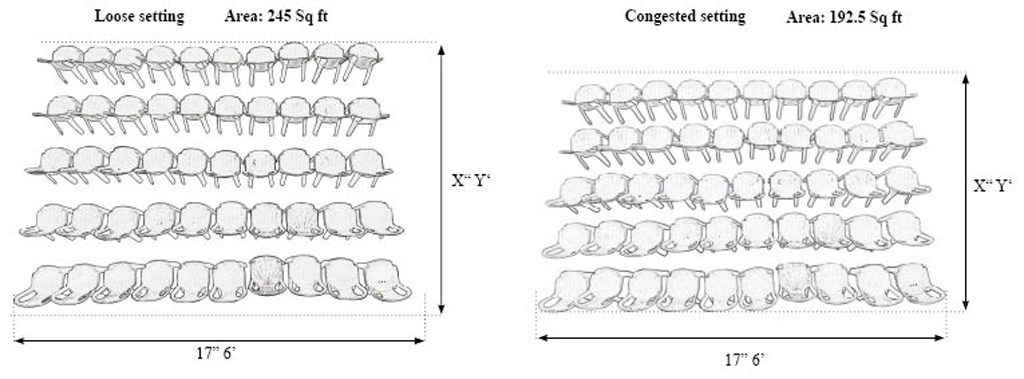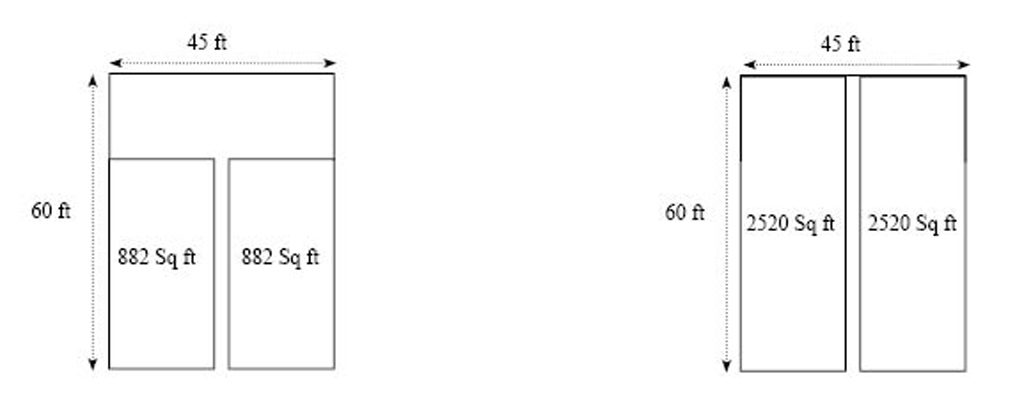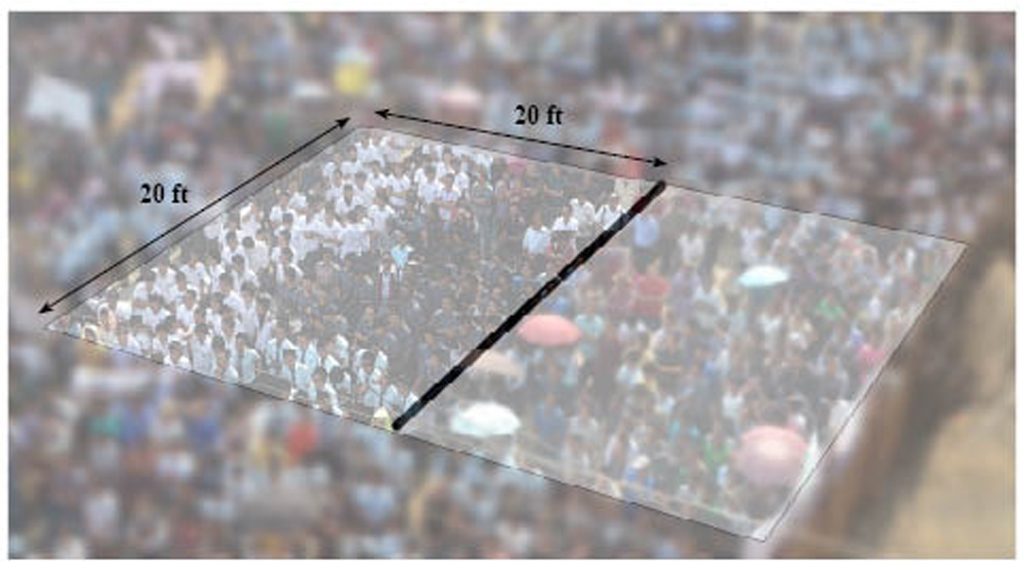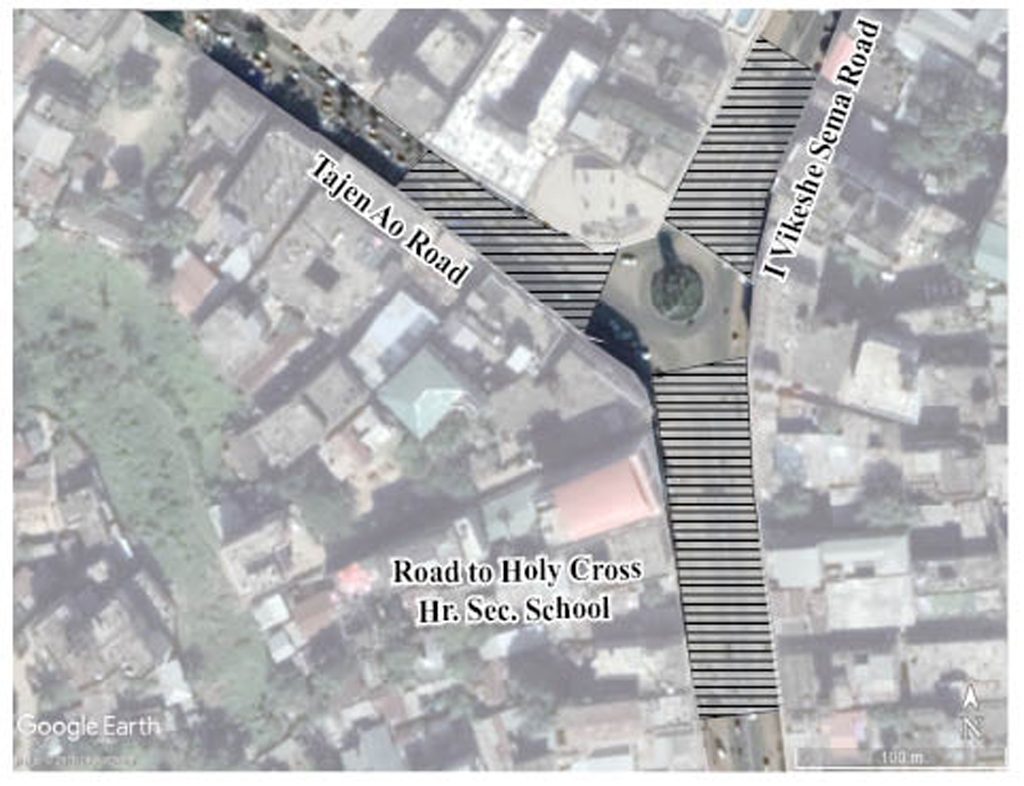An analysis of crowd counting, and its estimation in Dimapur
By Reyivolü Rhakho, Muzhaba Jamir, and Haichikambe Pame | EMN
All around the world crowd counting is always dicey affair. The difficulty is in balancing variable claims and counter claims about the number of people at a given event. A much-publicised instance is the crowd that attended the inauguration of US President Donald Trump in 2017. Officials did not give out specific numbers but claimed that the event drew ‘one of the biggest crowds’ to witness the inauguration. The media and other crowd science experts however disputed the claimed numbers stating that it was only one-third of the crowd that attended Obama’s inauguration in 2009 — believed to have been attended by 1.8 million people.
Nagaland is no different when it comes to exaggerating crowd numbers. Number claims during protest rallies and election campaigns are made based on assumptions that are mostly incorrect. It is a fact that getting a definite number of a crowd is not easy. However, numbers based on random assumptions can only lead to errors. For example, there have been claims by organisations about the number of people to a crowd: A political party once claimed that 42,000 supporters attended a rally in Dimapur, while another organisation claimed a whooping 65,000 people at a protest rally in Dimapur, both in 2017.
There is always a tendency by organisations to exaggerate numbers in the media to leverage a support base. On the other hand, the media in Nagaland has resigned to the fact that there is no practicable scientific means to attest to or disprove the claimed numbers. It can only relay the numbers as claimed by event organisers.
Perception may be a factor too for low-population states like Nagaland where crowds are rare. Consequently, people may simply accept the claimed numbers without doubt or debate. To substantiate this theory: The census of 1961 has the total population of Nagaland at only 3, 69,200 persons. It was only during the census of 1991 that Nagaland crossed the 10 lakh mark. Even that too is supposed to be exaggerated because double enumeration was alleged apparently for political reasons especially in the villages across Nagaland. So, even a crowd of 5,000 seems tremendous for the people. In the rest of the country, crowd estimation is more realistic. For a big musical concert a crowd of 30,000 is good attendance, while sports events like the IPL and ISL bring a crowd of around 60,000 on the higher side.
A field study was conducted for a week by Eastern Mirror to address crowd counting impediments and influence correct reporting. At the end of the study, the team came to a conclusion with bringing to light some drastic changes to the way crowds are estimated in the state. The study was able to bust some myths related to crowd estimation. It also has suggested a number of realistic ways to count crowds in Nagaland.
The crowd counting study was based on Dimapur, and framed on four types of space-occupation:
- A sat crowd in the gallery of the DDSC stadium
- A sat crowd at the state stadium
- A crowd of people sitting on chairs
- Standing crowd
The scenarios took into account cramped and loose settings. The reason is that crowd numbers generally vary, which leads to varying proximity between two persons or spacing among chairs.
DDSC Stadium
Fig 1:

The main gallery of the Dimapur District Sports Council (DDSC) stadium measures about 342 ft 4 in, without the curved section. The seating area has 13 concrete steps. The length of the top step, which is the 13th step, is about 452ft 4in end-to-end. The way to the gallery’s seating area is by three flights of steps, a large one in the middle measuring 17 ft 7 in and two smaller ones, measuring 6.7 ft, at each sides of the gallery. The roof of the gallery is supported by 26 iron pillars each of which occupies 2 ft 6 in ground area, each of which adds to loss of space.
After dividing the gallery into sections for measurement, the average space taken by a person was also calculated based on space that three local persons of different body masses may occupy. On an average, three different body masses occupy about 3 ft 10 in of length to sit comfortably. If they are sitting closely to one another, sitting in a congested arrangement, they would occupy an average of 3 ft 3 in. So 15.3 in of space would be occupied by a person in a loose seating arrangement while, a person will occupy about 13 in of space in a tight arrangement.
The results indicate that the first five steps of the gallery can accommodate approximately 1,226 persons if they are seated closely and about 838 persons in a loose comfortable seating arrangement. The two steps, one on which the pillars stand, and the step just next to it, would accommodate about 526 persons sitting tightly and about 448 persons, loosely seated.
The other six steps may accommodate about 1,555 persons if comfortably seated and about 1830 if they are seated tightly. The curved area of the gallery at either end has 12 steps, totalling to a length of 62.5 ft at the top. The length gradually decreases with an approximate length of 5 ft with every step. The bottom first stair measures 10 ft in length. Therefore, the curved gallery can accommodate about 419 persons sitting loosely and 520 when sitting tightly.
The 13th step, which measures about 330ft 4 in in length till the bend of the gallery, may also accommodate a single line of persons standing behind those seated below. About 283 to 300 persons standing sideways may be accommodated if a standing person occupies not more than 14 in of area.
All the sections of the gallery added: The results show that it might accommodate around 3,600 people when loosely seated and about 4,400 when seated tightly within safe limits. An estimate of more standing persons and some sitting in the landing areas show that the gallery of the DSSC stadium may accommodate approximately 5,000 people at maximum — a number that is markedly different from what was being believed.
State stadium
Fig 2:

The number of stairs in the state football stadium is comparatively fewer to that at the DDSC stadium. There are two sets of galleries adjacent to each other. Both the galleries consist of eight steps each with slight variation in length. The gallery measures about 164 ft in length, while the other is 126ft 6 in. The total of eight stairs gives a total length of 1072 ft and 1012 ft respectively.
Taking the same averages used at the calculations at DDSC stadium, the state stadium’s gallery can accommodate about 1,832 persons in a loose sitting, and 2,150 in a tight sitting. On the higher side, the number can be safely assumed to about 1,850 at minimum and about 2,200 at the maximum.
Chairs

To measure the area occupied by chairs, a sample of chairs such as the ones used by a rental firm AKA tent house in Dimapur was used. It was found that to accommodate 50 chairs in five rows of ten chairs each, the area needed is about 245 sq ft (Figure 3) or 4.9 sq ft per chair in loose arrangement. In a very tight congested arrangement of the same 50 chairs in five rows of ten chairs, the area it would require is approximately 192.5 sq ft. or 3.85 sq ft per chair (Figure 3). An area of 81/2 inches in length was kept between chairs to include a scenario of loose seating; and 7 inches for tight seating.
Further, two scenarios were constructed to explain how many chairs would accommodate an area that is a popularly chosen setting for events.

In the first scenario, an area of 60×45 ft rectangular, enclosed space was assumed as the size of a regular tent measures 15×15 ft. An area covered by 18 ft at one end of the rectangle was subtracted to accommodate a stage area and space between the stage and the first row of chairs. A gangway of 3 ft between the rows of chairs was again subtracted for the whole length of the rectangle (Figure 4.1). Therefore, the effective remaining area is 42×42 ft, giving an area of 1,764 sq ft. The rest of the area can therefore accommodate approximately 360 chairs that are loosely place and 458 that are placed tighter.
In the second scenario, the same rectangular enclosure of 60×45 ft was considered but fully this time without any loss of space for stages. The same gangway of 3 ft between two columns of rows of chairs was considered (Figure 4.2). The effective remaining area where chairs can be set is 60×42 ft or 2520 sq ft of space. When the same average area covered by a chair (4.9 sq ft and 3.85 sq ft) is considered, it can accommodate about 515 chairs in a spacious setting and a maximum of 655 chairs in a tight setting.
Standing Crowds
Many rallies in Dimapur and in Nagaland held in the open usually have people who stand. Unlike the methods used for spaces where there are designated seating areas, counting crowds who are in open spaces require photographic evidences. The entire area of study can then be sub-divided into smaller squares. This might ensure almost near accurate counting.
According to Prof. Dr. G Kieth Still, author of ‘Introduction to Crowd Science,’ the ‘upper safe limit’ for standing crowds is maximum five people standing in an area of one sq m. The one sq m in the metric scale converts to 10.7639 sq ft in the imperial scale. The imperial scale is the measurement used popularly in land measurements in Nagaland. In other words, in the recommended upper safe limit a person might occupy is about 2.15 sq ft.

A case study for a standing crowd was undertaken by assessing it with a photograph that was taken at a rally that was held in Dimapur a few years ago. (Figure 5) The road in the picture is the Circular Road starting from Clock Tower to Holy Cross School. An area of about 400 sq ft was scaled out using real marking points on the street. It was found out that there were around 150 people on the higher side. It can be safely assumed that around four people occupied a space of 10.7639 sq ft. This is one person short from the assumed upper safe limit probably because of the warm climatic conditions of Dimapur. In other words, a person at a rally in Dimapur uses about 2.7 sq ft to stand, according to assessment from photographs of rallies.
Therefore, assuming that measurements from the previous instance would continue i.e., the area taken by a person standing according to the safe upper limit, a 10 X10 ft (100sq ft) of space may accommodate maximum 46.5 persons. In Dimapur, the same space would be filled only by 37.03 persons.

For the second case study, the 300 ft stretch of road at Clock Tower starting from Big Bazaar to the Eastern Mirror office was selected. The total area that it covers, according to Google Map, was 25,000 sq ft (Figure 6). Based on the findings, in this space approximately 9,615 persons can be accommodated for a usual Dimapur crowd but 9,660 persons on the higher side.
Likewise, a stretch of 225 ft was selected for Tajen Ao Road. The area is about 14,000 sq ft. After being calculated on averages it was found that the area can accommodate about 5,384 persons for the usual Dimapur crowd, and 5,577 on the higher side.
Further, a length of 200 ft of the I Vikeshe Sema Road was selected. It covers an area of about 17,000 sq ft. It can accommodate about 6,538 persons and 6,772 persons on the higher side.
If the total area of 56,000 sq ft covering the three roads is considered, the space would be filled by approximately 21,537 persons with comfortable space between each person. If the upper limit of five persons in a square metre is calculated, the same space may accommodate approximately 26,046 persons.
Reyivolu Rhakho, Muzhaba Jamir, and Haichikambe Pame are currently trainee reporters at Eastern Mirror. This study was done as a field work as part of Eastern Mirror’s continued effort on correct reporting based on factual data. The team was mentored by K Wapong Longkumer.
Edited by Al Ngullie and Temjenrenba Anichar

